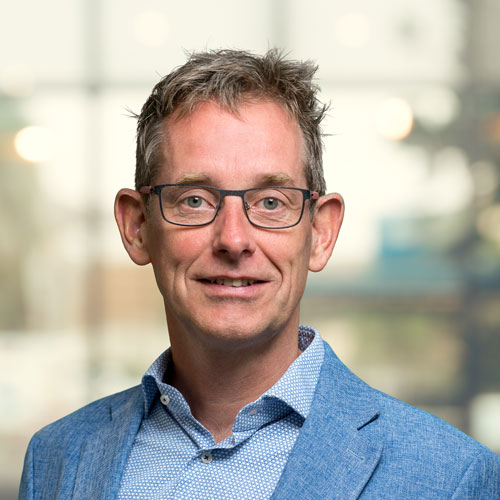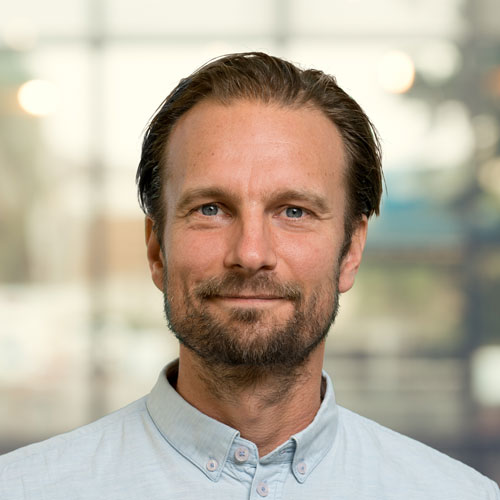
Preventing energy poverty
It is estimated that more than 750 thousand households in the Netherlands struggle to pay their energy bills every month, even though the success of the energy transition depends on public support. How do we prevent energy poverty and what role does it play in the energy transition? That is what we are studying.
Insight into energy poverty in Europe
To gain insight into energy poverty policy and effective support measures for energy poor households, TNO investigated both the scientific and policy side of energy poverty in the Netherlands. We also looked at the policies of other European countries. Policies to help low-energy households have increased, but a long-term strategy is lacking. For example, making those homes more sustainable should be given priority so that they too can keep up with the energy transition and energy poverty can be prevented.
Energy poverty the state of affairs
Read our report 'Energy poverty the state of affairs', which is also a knowledge base for the National Energy Poverty Research Programme
Energy poverty in the Netherlands
The study 'Energy poverty in the Netherlands: how much, who, and where?' shows for the first time where energy poverty is prevalent in the Netherlands. It is mainly outside the Randstad conurbation, in the north, east, and south-east of the country and in part of the province of Zeeland. This study is a follow-up study with Statistics Netherlands into the role of energy poverty in the energy transition. In it, we worked out the levels of energy poverty for each municipality.
TNO is the initiator of the national long-term energy poverty research programme. We work together with the Dutch governement, ministries of Economic Affairs and Climate Policy, Social Affairs and the Interior and Royal Relations and the provinces of South Holland and North Holland to reduce and prevent energy poverty in the Netherlands. This goes according to several studies and work sessions that fall under three pillars; more insight into the target group, knowledge acceleration and policy development.
Unequal household vulnerability
High energy prices do not affect all households equally. Our research shows that lower-income groups are particularly vulnerable, regardless of their housing characteristics. Using microdata, we analyse the relationship between energy costs and income and examine how different households respond to price fluctuations.
Our findings indicate that home insulation helps but is not sufficient to eliminate energy poverty. A combination of income-dependent measures—both increasing income and reducing costs—is essential.
TNO report on unequal household vulnerability to high energy prices
This study provides insights for more effective and targeted policies to better support vulnerable households.
Who lives in energy poverty?
Research that we conducted with 7 partners shows that people living in energy poverty are made up of different groups, including divorced families, elderly people living on a minimum income, or people with mental or health problems. Within these different groups, there are many households that are motivated to save; they want to learn and improve their own situation. A great deal of advice is still unknown among these target groups. Savings of 100 euros per year are no exception.
TNO report on energy poverty in the Netherlands
We are mapping out energy poverty in detail. Download the complete report ‘The facts about energy poverty in the Netherlands (pdf)' or read the summary.
White paper on energy poverty
Not everyone will benefit from the energy transition, especially if no efforts are made for a fair transition. We are researching a reliable, affordable, and sustainable energy system. If the energy transition unintentionally causes existing inequalities to persist or increase, this may be at the expense of public support for the energy transition.
Fair energy transition
So far, the Netherlands has no framework for measuring, monitoring, and combating energy poverty. Energy poverty expert Koen Straver from TNO wrote a white paper on the energy poverty issue with partners. The white paper contains findings and insights from the research and report on energy poverty by TNO and partners. Koen Straver discusses the 3 innovative measures for effective policy for a fair energy transition.
Public support
The success of the energy transition depends on public support. It is, therefore, not only a technological, but also a social change. How high will the bill be? Who is going to pay it? And who decides? Energy justice has several sides. It is about citizens and whether they can afford the additional costs. But there is also a new division of roles among companies. In addition to the traditional energy companies, local cooperatives or new market players can produce and sell energy. And this is only possible if the legislator provides room for these activities.
Poverty policy, local and national
We study energy poverty and make recommendations to counter this phenomenon. It is estimated that 750,000 households live in energy poverty. They cannot pay the bill or do all kinds of other things as a result. We organise meetings for municipalities to help people with low-incomes to reduce their energy bills. With knowledge and new insights, we help to take targeted measures for these vulnerable groups.
Interventions
In order to improve local, regional, and national policies, we study the effectiveness of interventions. In a European context, we exchange knowledge with other member states and share research results on this issue. This is how we develop social innovations for the energy transition.
Policies in the neighbourhood
Research into policy and decision-making helps municipalities to make informed choices. What we are working on:
- Involving the broader context. This is about coherence between quality of life in neighbourhoods, social cohesion, safety, financial security, and personal development. As soon as local residents discover that jointly generating energy or a collective heat supply is worthwhile, interest often increases.
- Research into new ways of collaborating and municipal decision-making in local heat supply.
- Developing learning paths for municipalities and local energy cooperatives. Here, they exchange experiences among themselves and with us as a knowledge partner, from which new knowledge and insights emerge.
- Working with entrepreneurs to make business parks and industrial estates energy neutral.
Public support
The energy transition literally enters the home. Think of, for example, insulation, new installations or a different cooker. Some residents have looked into this or already live in a sustainable home. For others it's not a priority yet. The steps from getting acquainted with and becoming aware of sustainability to the decision to invest in it are called a customer journey.
We research the customer journey and, together with the market, develop concepts to help citizens with this. Acceptance by end users such as citizens is important here. Other factors also ensure that sustainable technology is embedded in society. We are developing an approach for this and are helping companies.
Legislation
The current legislation is not yet optimal for the social and technological innovations that contribute to the energy transition. We are researching legislation and policy, and how best to organise the energy market. Do the laws and regulations support or hinder the energy transition? The Netherlands can learn from experiences abroad, such as Denmark.
International examples
In Denmark, heat grids are already more widely used. We analysed how heat grids are organised there and created an overview of Dutch and foreign successes and innovations for a sustainable and affordable energy transition. Serious involvement of citizens promotes acceptance and support. Local residents' associations play an important role here.
Regulations for new businesses
Legislation must be designed in such a way that new, innovative companies have the same opportunities as existing ones. That is not always the case at the moment. Also, market entry is often difficult for local cooperatives. For example, we are involved in a project in which they, together with banks, are devising a model for financing the heat grids of these cooperatives.
Projects on energy poverty
The Netherlands natural-gas-free
Making our country natural gas-free is a rigorous step and part of the transition to a fully sustainable energy supply in 2050. What exactly must be done, by whom, and when to make natural-gas-free neighbourhoods possible on a large scale? This is the question that our researchers are studying.
BE+
The Netherlands can reduce carbon emissions much further than agreed in the Climate Agreement for the entire built environment, i.e., by making less than a tenth of the business parks and industrial sites in the Netherlands energy-positive over the next decade. Business parks are neglected in the discussion on energy saving, although there is much more environmental benefit to be gained there than in homes. Read more about the BE+ project
Mapping out energy poverty in Zuid-Holland
Commissioned by the province of Zuid-Holland, TNO, Statistics Netherlands, and Erasmus MC conducted a study to identify energy poverty. In addition, we mapped out how the province of Zuid-Holland could develop an approach for this. This can be done through a demand-driven programme, driven by the implementers in the neighbourhood, which also provides an opportunity to help households with energy poverty and make them less vulnerable.
Download the report on energy poverty in Zuid-Holland (pdf, 1.6 MB)
Accelerating a climate-neutral built environment
The built environment must be carbon-neutral by 2050. To achieve this, seven million homes and one million other buildings must be transitioned to natural-gas-free. We have developed the contingent approach for this purpose. This will enable 70 per cent of building to be made sustainable in a more efficient, cheaper and quicker way. It focuses on the clustering of demand into specific clusters of buildings. Read more about this approach
Our latest developments
Scenarios for a climate-neutral energy system



